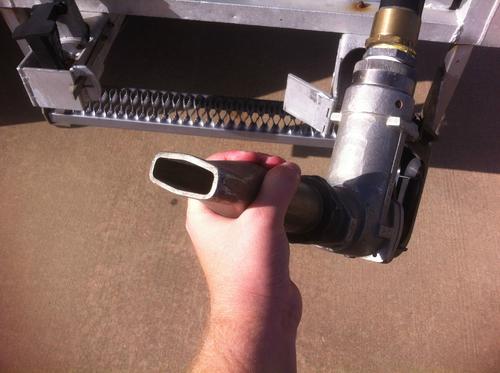I would have. As a matter of fact, I'd probably have put it in video mode. THere is no telling how much good pictures of the aircraft before it melted down will help the NTSB figure out what really happened.
The internals of the engine should provide at least a clue as to what was happening just prior to impact.
I do have a question ... for the fellow that said that if it had been misfueled with JetA there would be holes in the pistons. I'm sort of curious how that would happen since the octane of JetA is somewhere down in the 15-20 range? You would (or should) have gotten detonation and the engine shaking like a wet puppy before you ever rotated.
Just thinking out loud ...
Jim
Depends on the dilution rate... If he had 1/4 tank of 100LL and they topped it off with kerosene, then the effective octane would be in the low 50's.... The motor would run , but detonate itself to death while still making just enough power to stay aloft..... If he was # 1 for takeoff and did a quick run up, there would be enough straight 100LL in the fuel lines gascolator, fuel filters, fuel pump and other places to start the motor and get airborne.
The motor will still run but at reduced power which jives with the people at the airport saying he was struggling to get up in the air.. That runway was 6001 feet long and my guess is he needed 1600-1800 to get wheels up. That left 3/4 of a mile to set her back down.. Why he didn't ... We will never know..... Godspeed to those people..





I did see the OP post a minute or so after he posted and I went to the link for the TV station streaming it live... Over a 40 minute period after they put out the flames, there were numerous close up, live raw feeds that were unedited..
During the time the firemen were waiting for the foam to dissapate they were marking items and gouges with orange paint to document the scene. Once the foam cleared a little, they counted skulls and that is how they knew there was actually 4 victims and not just one, like they had originally thought...
Here is what I "thought" saw in all the videos..
Next to the firetruck that was parked diagonally at the rear of the plane was a big divit in the pavement, probably where the prop /crank broke off. Then more scars leading into the concrete center divider at about a 75 -80 degree angle...
The flaming and only big part that cleared the divider and hit the vehicles windshield that was traveling in the opposite direction was the left fuel tank... That should still have a decent sample of liquid in it to test..
What was remaining of left wing was folded back against the fuselage next to the barrier. The right wing was mostly still there including the main spar and ribs. The skin did get melted off though..
Motor looked in surprising decent shape , sitting upright but missing the front of the crank. Prop looked like it hit the center divider, richocheted off and the hub and two blades came to rest 30 or so feet ahead of the wreckage.. Both of those blades clearly showed it was rotating and making some power at impact..At that stage the cameraman kept zooming in on the wreckage and the charred remains of the poor people....



I quit watching and went to the airport for a quick flight in my plane to ease my mind...
Like the saying goes.... ya gotta get right back on the horse to overcome your fears..... At least that works for me..
I don't know if it was misfueled, but there is no doubt it was running fine before the fuel stop....
Whatever caused the reduced power is the smoking gun and my guess is the NTSB will figure it out...


 We don't get a huge number of turboprops through SNL but I do confirm the fuel type with the pilots I interact with if it's anything but a standard Cessna or Piper, etc.
We don't get a huge number of turboprops through SNL but I do confirm the fuel type with the pilots I interact with if it's anything but a standard Cessna or Piper, etc.



